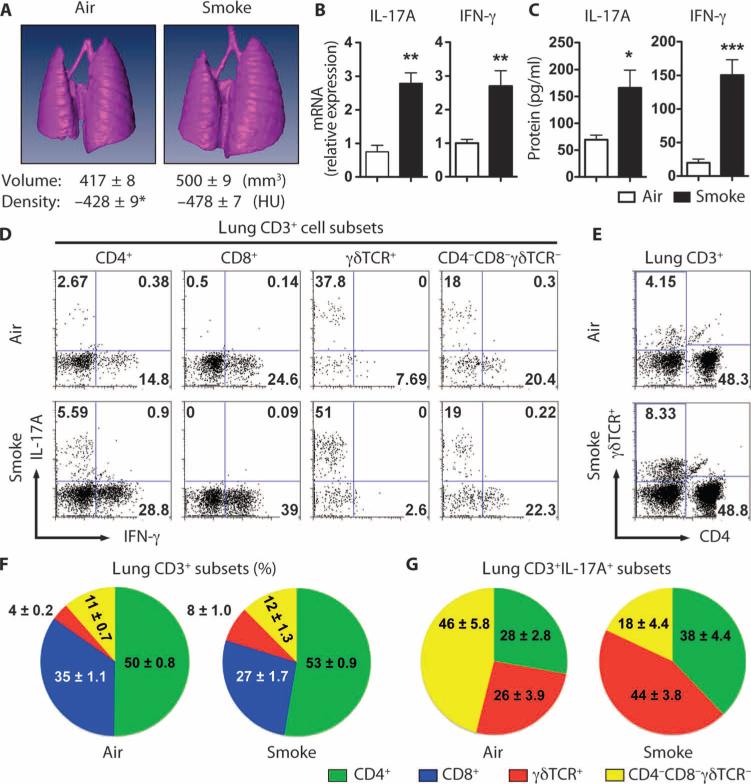Fig. 1.
Cigarette smoke induces emphysema and increases lung IFN-γ and IL-17A production in mice. (A) Representative three-dimensional images of lungs from air- or cigarette smoke–exposed mice. Average lung volume and density are shown below. n = 10 per group. *P < 0.01. HU, Hounsfield unit. (B) Il17a and IFN-γ mRNA expression from total lung mRNA of air- or cigarette smoke–exposed mice. Data are representative of two independent studies. n = 5 per group per study. **P < 0.01. (C) IL-17A and IFN-γ protein expression from total lung mRNA of air- or cigarette smoke–exposed mice. Lung CD11c-depleted cells were stimulated overnight with PMA and ionomycin, after which supernatant protein concentrations were measured. n = 5 per group. *P < 0.05; ***P < 0.001. (D) Representative intracellular staining for IL-17A and IFN-γ from the indicated T cell subsets isolated from lungs of air- and smoke-exposed mice. Data are representative of three independent studies. n = 5 per group per study. (E) Representative flow cytometry analyses of lung γδ T cells and CD4+ T cells from total lung CD3+ lymphocytes in (D). (F and G) Cumulative pie chart data depicting the relative abundance of defined lung CD3+ (F) and IL-17A–producing, CD3+ lung T cell subsets (G) from air- and smoke-exposed mice. Data represent three independent studies. n = 5 per group per study.

